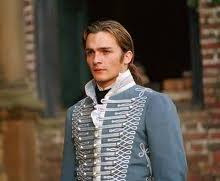Last weekend I got to do something I haven’t done in a few years–I went to see The Nutcracker! It was so much fun–when I was a kid we used to go every year, and I got a new Christmas party dress to wear to the performance. It was wonderful to see all the little girls in their pretty clothes, so excited to see the dancing and the sparkling lights.
It’s funny that something that’s become such an intrinsic part of the holiday season was a bit of a flop when it first opened! It started out promising. After the great success of The Sleeping Beauty in 1890, the director of the Imperial Theater in St. Petersburg asked Tchaikovsky and choreographer Marius Petipa to collaborate on another production, one based on ETA Hoffmann’s story The Nutcracker and the Mouse King. It turned out to be not a very harmonious partnership–Petipa sent Tchaikovsky very detailed instructions for each number in the ballet, right down to tempo and number of bars, and Tchaikovsky didn’t like working under such restraints. The production was further delayed by Tchaikovsky’s visit to the US and Petipa’s illness, but it did open at the Mariinsky Theater on December 18, 1892 in a version much condensed from the original story (there are only two acts, the first act the Christmas party and battle of the Mouse King where Clara helps save the Nutcracker Prince, and act two at the Kingdom of Sweets where we meet chocolate, coffee, marzipan, snowflakes and Sugar Plum Fairies…)
The first production got decidedly mixed reviews in a town that was very, very picky when it came to their ballet. One reviewer called the Sugar Plum Fairy “pudgy” and one complained about how confusing the Mouse King battle was (“One cannot understand anything. Disorderly pushing about from corner to corner and running backwards and forwards–quite amateurish”). It didn’t take off, though Tchaikovsky did have some success with a suite of the music.
Its first complete performance outside Russia was in England in 1934, and the first US performance at the San Francisco Ballet on December 24, 1944. The New York City Ballet debuted their version in 1954, which is when it really started to become the big money-maker it is now and a cherished tradition for many families like mine (most ballet companies function all year from the proceeds from their Nutcracker performances!)
For more information on the history of the ballet, I really like J. Fisher’s book Nutcracker Nation: How An Old World Ballet Became a Christmas Tradition in the New World (2003)
Do you go to see The Nutcracker? What are your favorite memories of the ballet??











